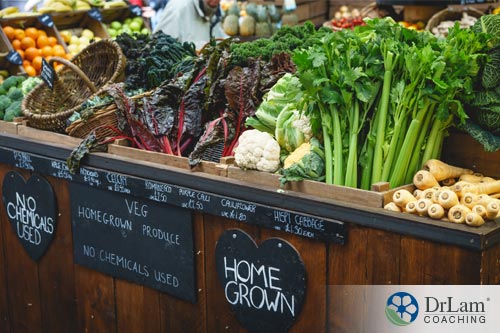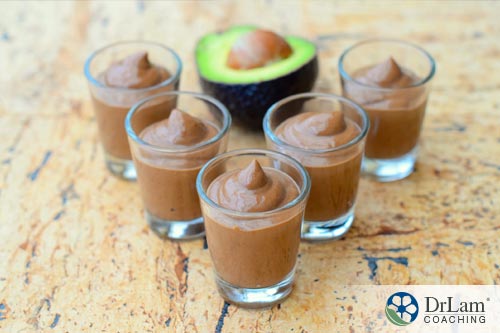 For some time, people have been trying to determine the best way to cope with stress. However, what many don’t realize is that your stress levels can be affected by your food choices, and they can affect which foods you choose as well. Hence, eating better and eating right can be key to boosting your mood and giving your body the tools it needs to cope with stress.
For some time, people have been trying to determine the best way to cope with stress. However, what many don’t realize is that your stress levels can be affected by your food choices, and they can affect which foods you choose as well. Hence, eating better and eating right can be key to boosting your mood and giving your body the tools it needs to cope with stress.
When you are feeling stressed out, studies show that you are more likely to reach for foods that are bad for you. And in the long run, these food choices can actually make you more susceptible to the effects of stress.
A Yale University study found that stress can change your eating patterns, specifically with regard to the consumption of foods that are hyperpalatable. These are foods that contain high amounts of sugar, fat, and tend to be highly processed.
Such hyperpalatable foods may actually be addictive. One study found that these foods are associated with significant loss of control and continued eating, despite their negative consequences. Hence, you can be expected to eat more of these foods, even when you are aware of their lack of nutritional value.
Another study from Iowa City found a two-way link between food intake and mood. Consequently, the study also found a relationship between food, mood, and obesity. That’s because emotional eating and having an altered mood can trigger significant changes in one’s food choices. This, in turn, can cause one to overeat and, eventually, become obese.
The tendency to overeat has also long been connected to stress. Research has shown that stress causes a person to eat more than usual. Overeating can also be an indication of dysregulation in one’s NeuroEndoMetabolic (NEM) Stress Response system, a consequence of chronic stress.
The NEM stress response system is what allows the body to deal with stress whenever it arises. This system is composed of six circuits which work independently and interdependently. Typically, these circuits return to normal function after dealing with stress, but they become dysregulated when stress is chronic.
One of the major circuits of the NEM stress system is the metabolic circuit, comprised of the pancreas, liver, and thyroid. When there is dysregulation in this circuit, two symptoms often manifest. The first is an increase in carbohydrate and sugar cravings, which leads to an increase in one’s energy intake. At the same time, the body also sequesters more energy into adipose tissue. Especially if it continues for a long time, it causes weight gain.
 When there is a dysregulation in the metabolic circuit, all the body’s systems can become overworked. And when one circuit in the NEM becomes compromised, others also experience dysregulation. A problem with the thyroid glands can eventually affect the adrenal glands in the hormone circuit.
When there is a dysregulation in the metabolic circuit, all the body’s systems can become overworked. And when one circuit in the NEM becomes compromised, others also experience dysregulation. A problem with the thyroid glands can eventually affect the adrenal glands in the hormone circuit.
When this happens, the adrenal glands become unable to produce enough stress hormones for the body to deal with stress effectively. This includes cortisol, the body’s primary stress hormone. With decreasing production of stress hormones, the body suffers significant hormonal imbalance. This, in turn, can trigger Adrenal Fatigue Syndrome (AFS).
In this way, stress and poor food choices can create a vicious cycle that contributes to adrenal fatigue. And symptoms of adrenal fatigue also include a craving for both fatty and salty foods.
As you continue to experience unhealthy cravings for hyperpalatable foods, it also creates further stress inside your body. That’s because foods that are high in sugar, fats, and preservatives take a great deal more effort to breakdown and process than wholesome organic foods. As a result, these bad food choices further create stress from within your body.
If nothing is done to control or stop unhealthy food binging, the body’s systems become further overworked, and adrenal fatigue worsens. In stage three of adrenal fatigue, you experience adrenal exhaustion. You might end up suffering from hypoglycemic episodes after having a meal, for example. And if circumstances don’t change, your condition can become even more serious.
To allow for adrenal recovery, it is essential to learn to make healthier food choices.
To prevent stress from affecting your food choices, you have to plan ahead and make sure you are surrounded with nutritious, mood-boosting foods that give your body the building blocks it needs to cope with stress.
One of the best ways to avoid binging on unhealthy foods in response to stress is to be sure to load up on nutrients that have been proven to boost one’s mood. These include:
There are many delicious foods that contain the nutrients you need to boost your mood and fight adrenal fatigue. If you are about to incorporate them into your diet for the first time, however, it may be a good idea to consult with your physician or nutritionist first. Many people with advanced adrenal fatigue have intolerances or allergies, and such a condition may add further unnecessary stress to your body.
That said, here are some foods to choose:
 Eating lots of fresh fruits and vegetables can go a long way in making sure your body gets all the nutrients it needs to cope with stress more effectively. Antioxidants in fresh produce are said to be linked to lower depression rates. Ideally, you should eat whole foods, instead of consuming those that are processed or sweetened.
Eating lots of fresh fruits and vegetables can go a long way in making sure your body gets all the nutrients it needs to cope with stress more effectively. Antioxidants in fresh produce are said to be linked to lower depression rates. Ideally, you should eat whole foods, instead of consuming those that are processed or sweetened.
Whole grains such as quinoa, brown rice, wild rice, bulgur, millet, amaranth, and steel-cut oats are a good source of vitamin B6. Vitamin B6 helps convert the amino acid tryptophan into the neurotransmitter, and happy chemical, serotonin.
Organic eggs are a rich source of essential nutrients such as protein, B vitamins, and iron. They are also a great source of energy. This helps you control your food cravings better since you won’t feel hungry all the time.
Shiitake mushrooms are known to be rich in vitamin B6. Vitamin B6 is a good source of pyridoxine which is said to have positive effects on one’s mood. In addition, an Australian study also found that shiitake mushrooms can prevent fat deposition in the body even if you are eating a high-fat diet.
Avocados are known to be effective hormone balancers, helping the brain make biochemicals that can improve your mood. A study in the Nutrition Journal has found that consuming avocado can lead to better nutrient intake and diet quality.
Dark chocolate happens to be an incredible mood booster. In fact, one study found that consuming it can significantly improve mood levels and immunity. In addition, it has also been shown to lower stress levels.
Now that you know which nutrients and foods to choose for a better mood every day, you’ll need some healthy dishes that you can prepare with them. The best part about these meals is that they also aid in adrenal recovery. This way, any harmful symptoms you may be experiencing can be reduced and your body can start to feel better.
In a small bowl whisk together Ingredients A.

All of these recipes are great food choices that can help you get the nutrients you need to stay healthy, fight off stress, and move towards recovery from adrenal fatigue. Feeling healthy all starts with the plan you make to support yourself in making the best food choices you can for your body when stress hits.
© Copyright 2019 Michael Lam, M.D. All Rights Reserved.
When you are under severe stress, your mood can be dampened. As this happens, studies have found that having an altered mood can also change your food choices. Instead of choosing to eat nutritious and wholesome meals, those under stress tend to indulge in foods rich in fat and sugar. This adds to their feelings of stress, creating a vicious cycle.
